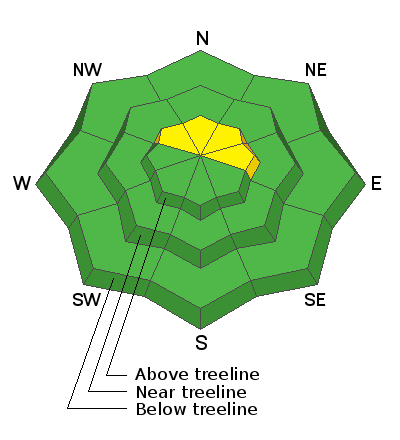Forecast for the Abajos Area Mountains

Issued by Eric Trenbeath on
Monday morning, March 22, 2021
Monday morning, March 22, 2021
The avalanche danger is MODERATE on steep upper elevation, wind drifted slopes that face NW-N-E where it is still possible to trigger an avalanche on a buried, persistent weak layer of sugary, faceted snow. Thinner snowpack areas and slopes with steep, rocky, more radical terrain are the most likely places to trigger an avalanche. Most other terrain has generally LOW danger.

Low
Moderate
Considerable
High
Extreme
Learn how to read the forecast here






